In just one month, the coronavirus pandemic has devastated businesses across the country.
With most states issuing stay-at-home orders and closures of all nonessential businesses, company owners have made painful decisions to lay off employees, close their doors and brace for an economic impact that is largely unknown.
And the restaurant and bar industry has taken one of the hardest blows.
The strategies for how to manage your bar or restaurant have changed…but what does it mean for their owners?
Not only that…but what does it mean for their customers and communities?
The Problem Is Bigger Than Empty Dining Rooms
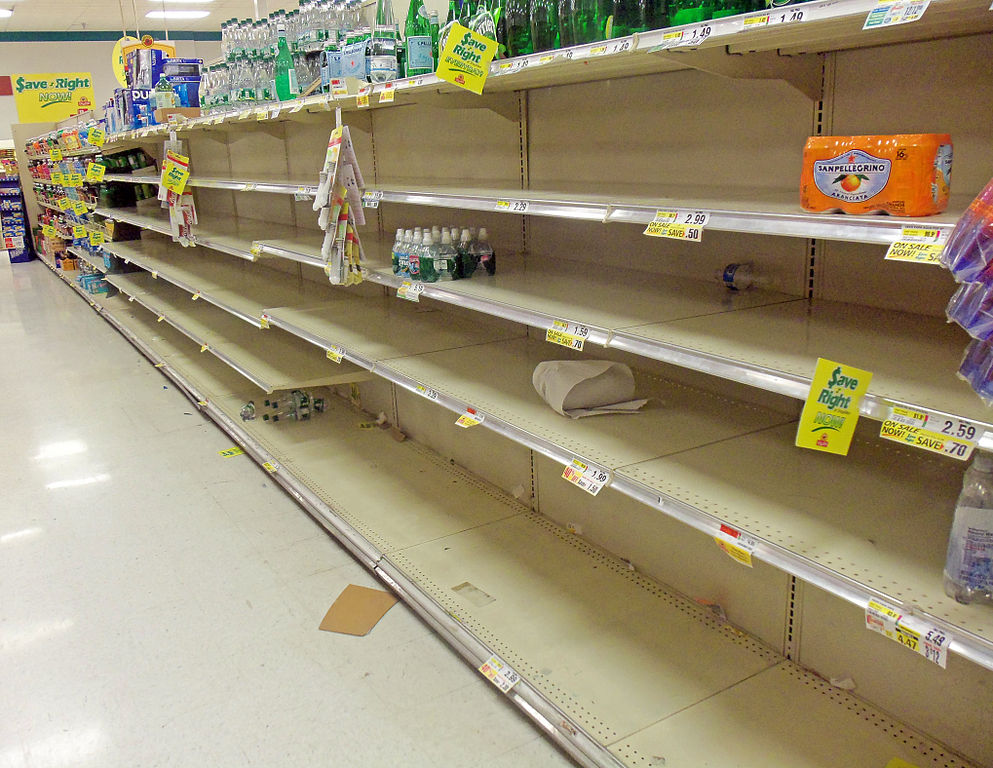
While these businesses are permitted to stay open, the majority of states have mandated that they close their dining rooms and offer takeout only, leaving restaurant survival in question for many businesses.
For restaurants that already offer carryout and delivery, this is no big deal. In fact, with the majority of consumers staying at home, these businesses are actually thriving.
But for bars and dine-in restaurants that have never offered food to-go, the order to shut down has left them with a nose-diving income, empty tables and fears that what they’ve worked so hard to build isn’t going to survive.
That’s bad. But there’s an even more critical issue: with restaurants closing up shop, consumers are losing one of their primary food sources.
The average person eats out 4 to 5 times a week. This is due to a variety of factors—our busy, on-the-go routines, the social benefits of gathering with others for a meal, the urban lifestyle that leaves people with small living spaces that don’t accommodate dinner tables.
All in all, restaurants provide 50% of the food we consume.
But the pandemic has brought all of that to a stop…and people still need to eat.
With grocery stores already taxed, we are headed for a crisis if restaurants are removed from the picture.
So what do you do? What’s the answer to how to manage your restaurant during the coronavirus? What’s the key to bar and restaurant survival?
The key is to adapt—and act quickly.
Businesses that pivot to meet the changing needs of their customers amidst the COVID-19 crisis will not only survive the pandemic, but thrive on the other side.
Businesses that just put up a CLOSED UNTIL FURTHER NOTICE sign on their doors and wait for things to return to normal will die.
Time is of the essence. You not only have a bar or restaurant to save, but life and death problems to solve for consumers.
So let’s talk about how to do it—and how restaurants nationally are winning this.
3 Restaurant Survival Strategies That Are Getting Results
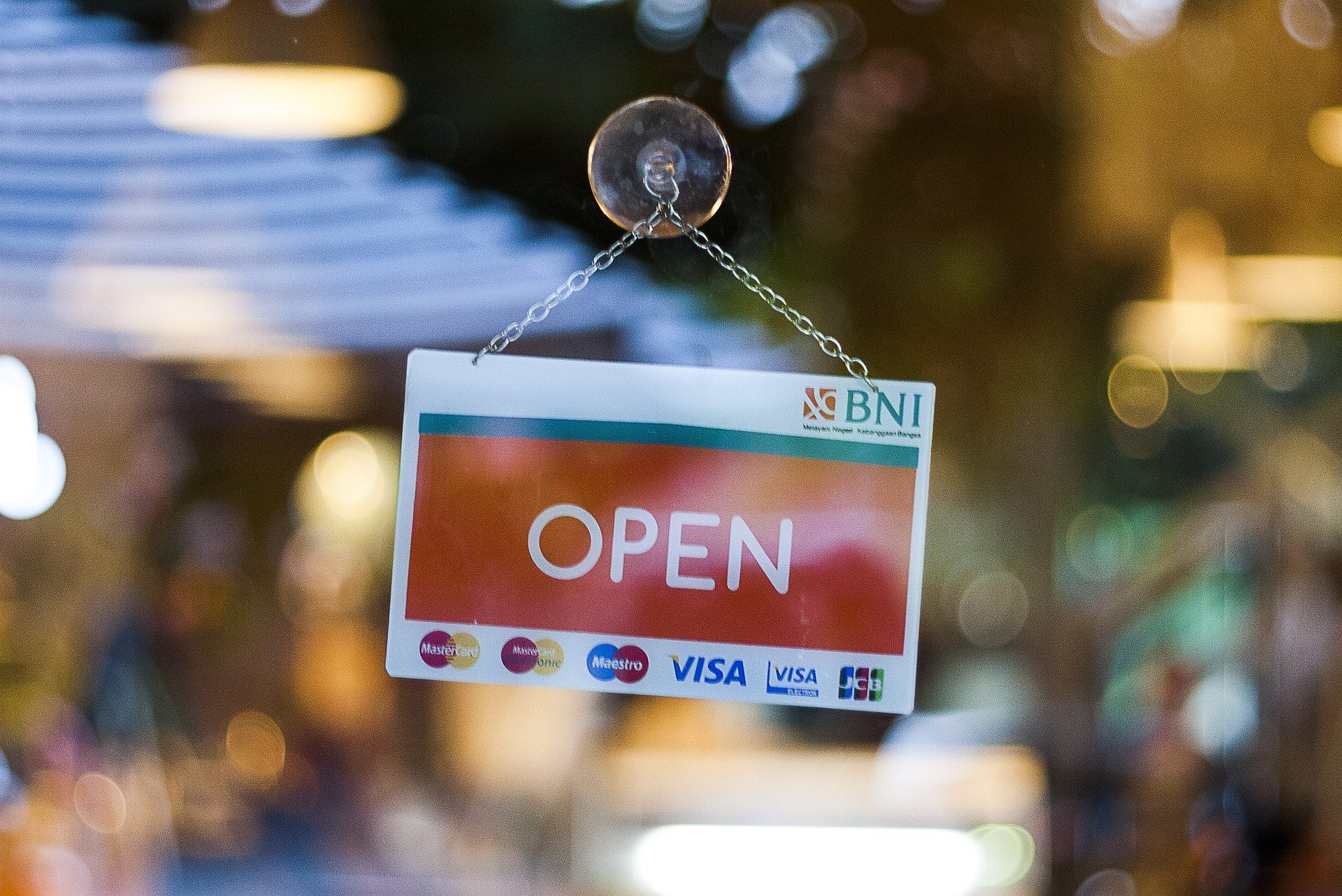
Address Health and Safety Objections
Even though restaurants designed to do takeout aren’t in danger of losing business, the primary objection customers have to eating out is sanitation—not just in terms of eating food someone else has prepared, but the uncertainty of having contact with others during pick-up.
Other more specific concerns have also emerged, including the fear of credit cards and cash being a carrier of the virus.
According to the Centers for Disease Control and Prevention, there is currently no evidence to prove that ordering carryout meals can spread COVID-19…but that doesn’t mean your customers know this information or are even assured by it.
The best way to overcome this objection? Make sure they know your carryout procedure is safe.
Many restaurants have bypassed pickup counters and windows entirely, inside offering contact-free curbside pickup.
Others, like pizza franchise Papa Johns, have gotten even more creative by offering no-contact delivery, where pizza delivery boxes are left at the door on a clean surface “for extra safety and peace of mind.”
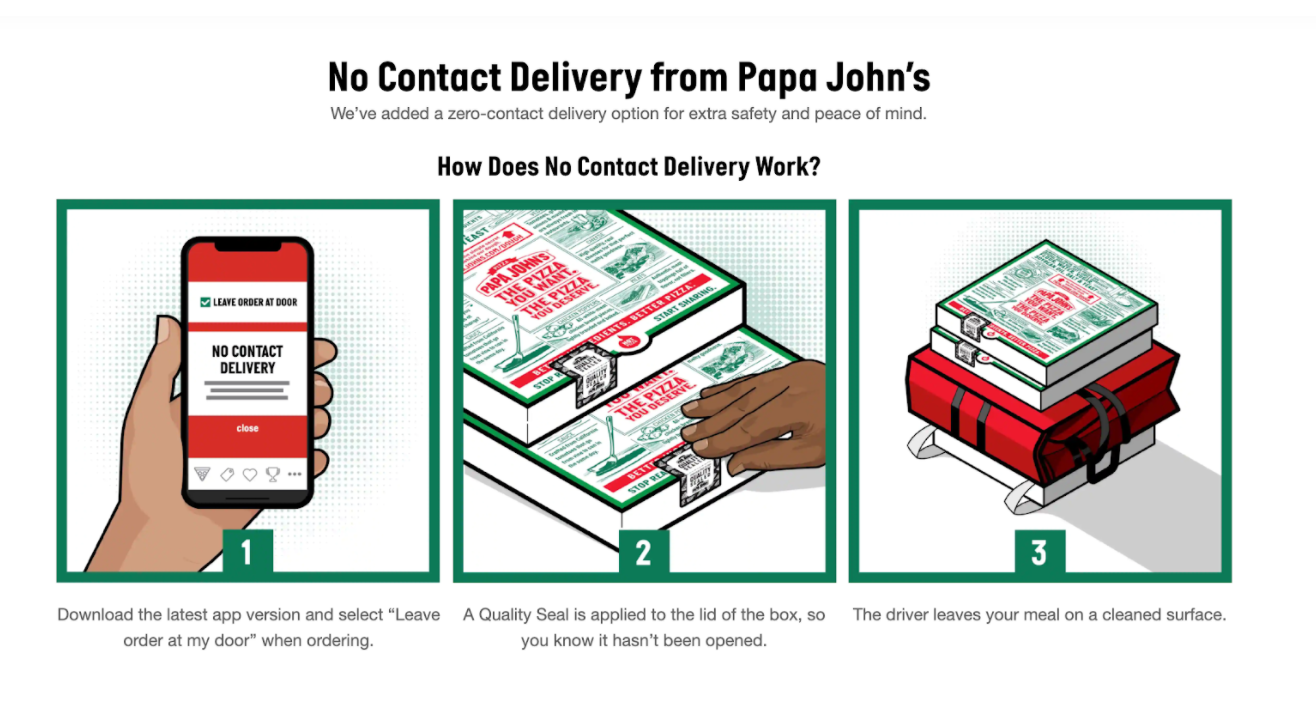
The process is clearly outlined step-by-step on their website, complete with illustrations of how each step observes safety guidelines.
Since payment has already been processed online, no contact with the deliverer is required. The boxes are even sealed to provide extra assurance that the customers are the first ones to open them.
In spite of the pandemic, revenue was up 2.3% throughout late February and March. While sales are still largely down due to social distancing efforts, the demand for safe pizza delivery has helped offset the damage.
Share Your Resources

An epidemic of hoarding and panic buying has swept America in the wake of COVID-19, and toilet paper, cleaning supplies and hand sanitizer have suddenly become rare and valuable commodities.
And guess who has a store room full of these things that they aren’t using? Bars and restaurants.
With dining rooms shut down, there are no tables to clean or bathrooms to supply with soap or the elusive toilet paper, which means you aren’t using your restaurant’s supply.
You are already giving them away for free when people are eating at your restaurant…so why stop now?
The best part, though, is that doing so creates a genuine connection with customers that meets needs they have beyond just food.
In Waynesburg, Ohio, the Village Family Restaurant has instituted the TP Tuesdays promotion, where customers who place orders of at least $25 receive a free roll of toilet paper.
They conceived of the promotion as a lighthearted way to connect with the public. The offer drove increased traffic to their social media page, which in turn increased sales on Tuesdays by as much as 25%.
“People are still calling three weeks later asking if TP Tuesday is still on,” owner Lacie Sims said.
The Beach Cafe in Manhattan experienced similar results. When they began giving away toilet paper with every order, they saw an increase of 20 to 30 orders per night.
Distilleries like Amass in Los Angeles are even shifting away from producing beverages to instead make hand sanitizer and soap.
Ultimately, the provision of basic necessities for hygiene along with food meets multiple, very real needs people are experiencing—which can lead to greater sales and community connections.
Add Drinks
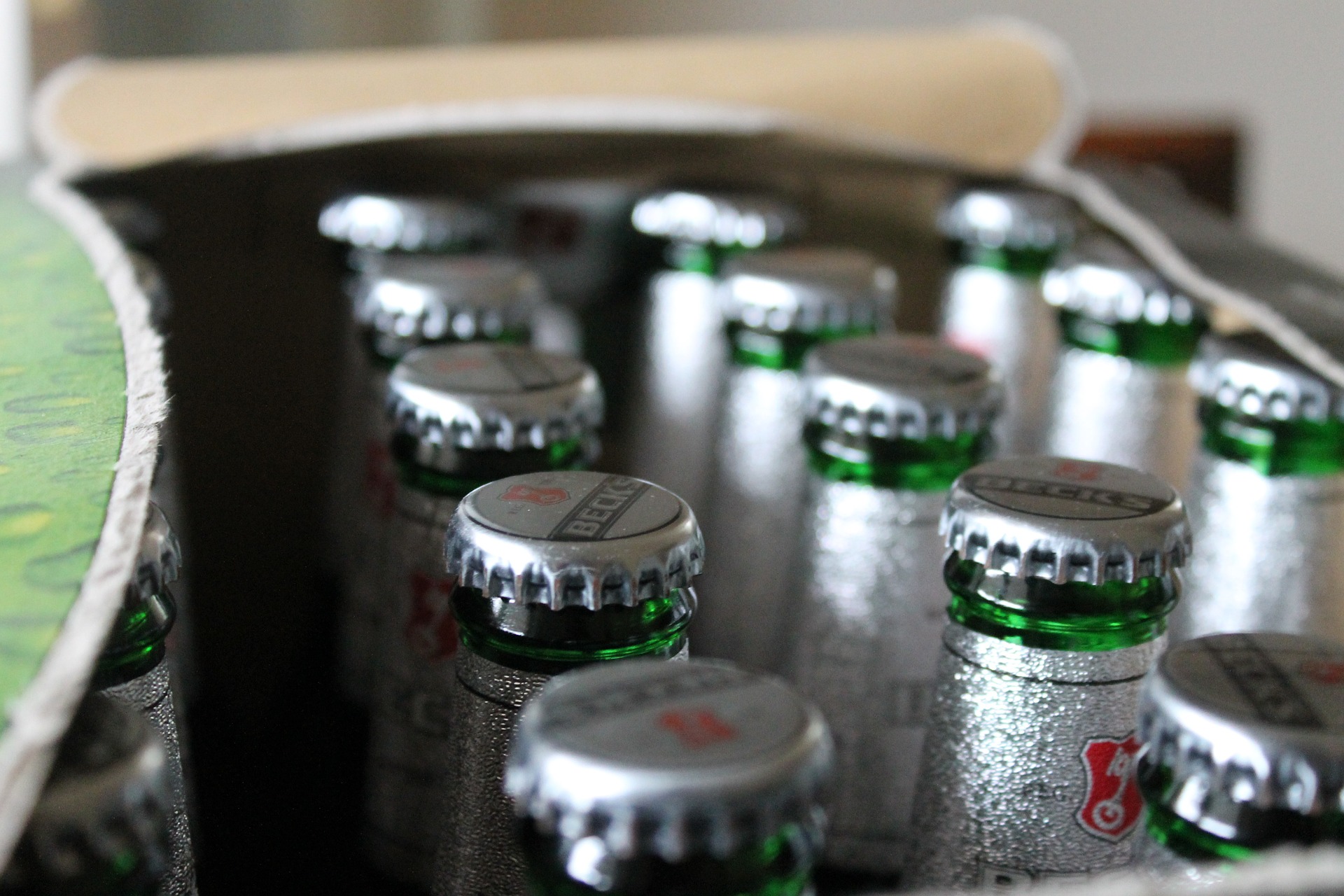
Adding beer or wine to food orders can increase your average ticket value by 30-100%, but restrictions on bars have disrupted the normal environment for ordering drinks.
While some states have relaxed their open container restrictions so bars can offer drinks and cocktails to go, most businesses can’t give out open containers of beer and wine.
But you can offer cases and bottles of beer or sealed bottles of wine to go, and many restaurants and bars have discovered how profitable it can be.
In Raleigh, North Carolina, Woody’s, the city’s most popular sports bar and the home of highly anticipated events like their March Madness celebration, has used their alcohol supply as a way to both bring in new customers and retain old ones.
Their offers include beer and wine coolers for 50% off, and the bar’s beer sales have been consistent since the crisis began. While sales are still down, their continued presence in the community is ensuring that their loyal customer base will keep coming back.
Manager Logan Lancaster was also quoted as saying that the offers have made a huge impact. “We have a lot of regulars coming in. They’re really helping us out. And the tips are amazing…They’re actually tipping more.”
How To Build Your Restaurant Survival Plan
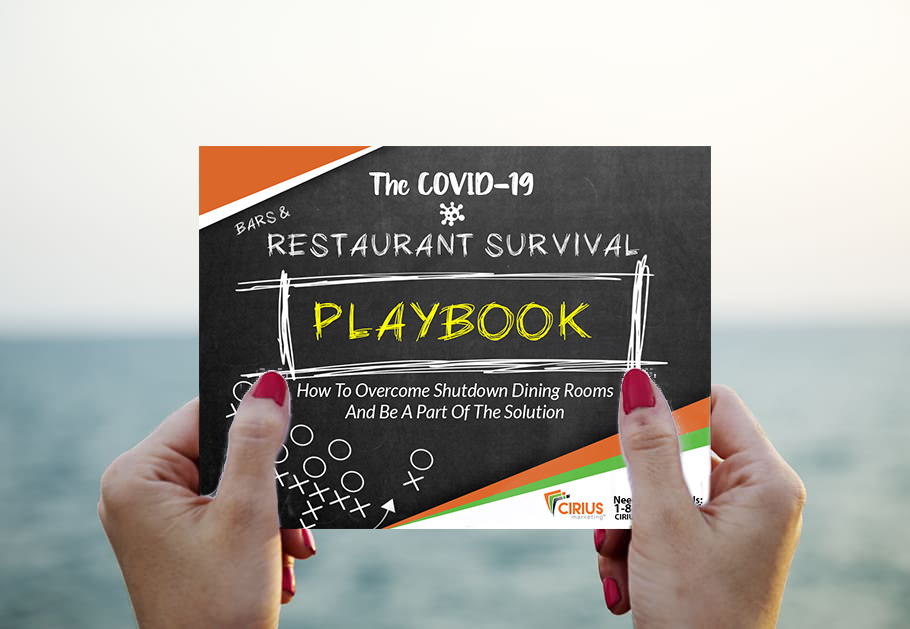
The lesson from these stories is clear: the fact that your dining room is closed does not mean that you are doomed to fail. You’ll need to relate to customers in ways you aren’t accustomed to—but if you do, your chances of survival are far greater.
Plus—by staying open and active, you are being a part of the solution in a way that will create customer loyalty that will sustain long after the pandemic ends.
Customers will remember the free rolls of toilet paper, your concern for their safety and the way you remained a presence in the community through discounted beer to go.
And when your dining room is open again, they’ll be back.
If you’re worried about whether your restaurant or bar is going to survive the COVID-19 crisis, implementing even one of these strategies can increase your odds of not only making it through this difficult time, but coming out stronger on the other side.
To learn more about how to put these strategies to work, we’ve created The COVID-19 Bar and Restaurant Survival Playbook.
You’ll learn step-by-step how to execute the strategies we’ve discussed in this post for yourself—plus more—so you can see higher ticket values, build better communication with customers and more easily migrate to a takeout experience that fits your business.
Best of all? You’ll be continuing your mission of feeding people in a time when they need it most.
So check it out here. Got questions? Give us a call at 855-607-7766 or email hello@ciriusmarketing.com.
